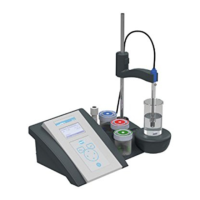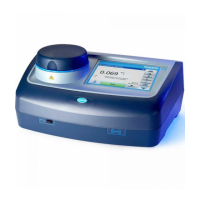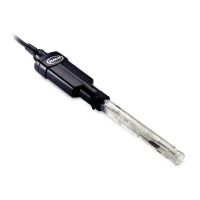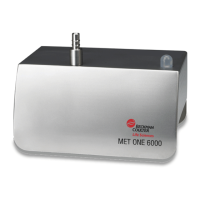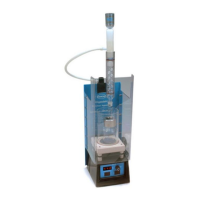Option Description
Cal. frequency Calibration reminder—can be set between 0–7 days
(default daily). The display shows the remaining time to
the new calibration. Refer to Set the calibration reminder
on page 10 for more information.
Display mV Display mV—select YES or NO to show mV.
Standard 220 mV Standard 220 mV—calibrate with a 220 mV standard
solution
To a X value To a X value—use a specific standard solution. Adjust
the value during the calibration.
Data introduction Data introduction Compensation—enter the
compensation value
Factory adjust Factory adjust—enter the compensation value
Calibration types
Different calibration types can be selected.
1. From the main menu use the or to select CALIBRATION.
Confirm.
2. Use the to enter the calibration menu.
3. Use the or to select Calibration type.
Option Description
Technical buffers pH 2.00, 4.01, 7.00, 9.21 and 10.01 at 25 °C
(77 °F)
DIN19266 Buffers pH 1.679, 4.006, 6.865, 7.000, 9.180, 10.012 and
12.454
User Buffers Selected when the technical or DIN19266 buffers
are not used. Refer to Technical buffer solutions
(DIN 19267) on page 18 for pH values of
specific buffer sets at varying temperatures.
Calibration to a X value To adjust manually any scale value of the
measured pH.
Option Description
Data introduction Manual probe constant introduction.
Theoretical calibration The probe calibration data is replaced at 25 °C
(77 °F).
Calibration procedure
This procedure is for general use with liquid calibration solutions. Refer
to the documents that are included with each probe for additional
information.
Note: Solutions should be stirred during calibration. For more information about the
stirring settings, refer to Change the stirring settings on page 12.
1. Pour the buffers or calibration solutions into the labeled calibration
beakers.
2. From the main menu use the or and and to select the
CALIBRATION parameter. Confirm.
3. If required select the Operator ID (1 to 10) and confirm.
4. Rinse the probe with deionized water and put the probe into the first
calibration beaker. Be sure that there are no air bubbles in the
membrane.
5. Push to Start calibration.
6. Push to measure the first calibration solution.
The next calibration solution is shown.
7. Rinse the probe with deionized water and put the probe into the
second calibration beaker. Be sure that there are no air bubbles in
the membrane.
8. Push to measure the second calibration solution.
The next calibration solution is shown.
9. Rinse the probe with deionized water and put the probe into the third
calibration beaker. Be sure that there are no air bubbles in the
membrane.
10. Push to measure the third calibration solution.
When the calibration is good, the display briefly shows Calibration
OK and then returns to the main menu.
Note: When a printer is connected the print menu opens and the result can be
printed.
English 9
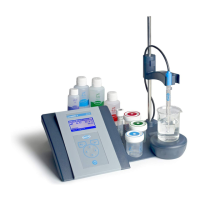
